Blog Posts Tagged Technical Content
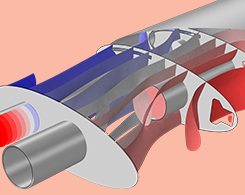
Using the Port Boundary Condition in Acoustic Waveguide Models
By combining several Port boundary conditions, you can easily compute the transmission and insertion loss in exhaust and muffler systems. See more benefits of this feature for acoustics modeling.
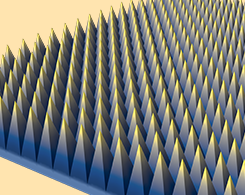
How to Numerically Simplify Your Periodic RF Models
Looking for an easier way to model periodic RF structures, such as frequency selective surfaces, electromagnetic band gap structures, reactive and high impedance surfaces, and metamaterials?
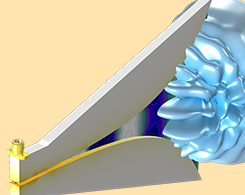
Your Guide to the Physics Interfaces and Studies in the RF Module
The RF Module includes 4 physics interfaces and studies that you can use to analyze electromagnetic wave propagation and resonance behavior in your RF analyses.

Calculating the Heat Transfer Coefficient for Flat and Corrugated Plates
What is the heat transfer coefficient, and how do you calculate it? This blog post includes a theoretical background and demonstration of 2 examples in COMSOL Multiphysics®.
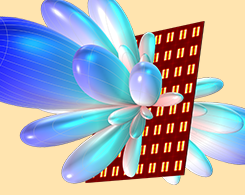
How to Synthesize the Radiation Pattern of an Antenna Array
You can study and prototype a phased array antenna without analyzing the entire structure through a full 3D wave equation (saving time and computational costs) by using an antenna array factor.

Modeling Multi-Ply Materials with Composite Materials Technology
In a follow-up to a previous blog post on paper mechanics modeling, Eric Linvill of Lightness by Design compares 3 methods of analysis for multi-ply materials such as paperboard.

Modeling Fluid-Structure Interaction in Multibody Mechanisms
To model advanced FSI scenarios, such as swimming mechanisms or airflow around a wind turbine blade, you can use the Fluid-Structure Interaction, Pair multiphysics coupling.
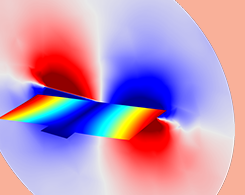
How to Model Different Types of Damping in COMSOL Multiphysics®
Structural dynamics analyses can be difficult if you have to account for damping. Get a demonstration of how to use the different numerical models for damping in COMSOL Multiphysics. Part 2 of 3.
